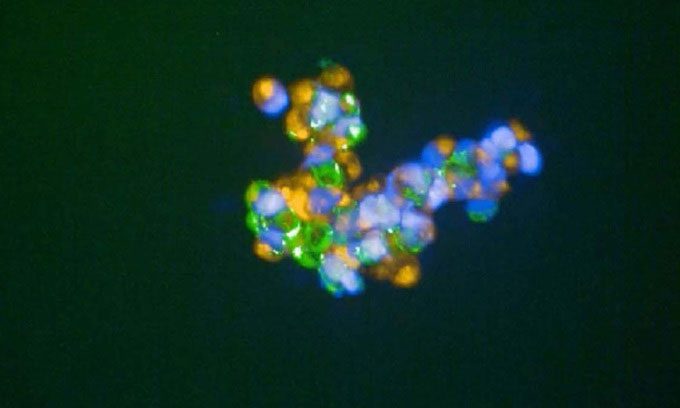Synthetic Cell Adhesion Molecules (synCAM) Could Advance Regenerative Medicine and Laboratory Organ Development

Microscopic image of cells adhering to each other using synthetic “cell glue.” (Image: Lim Lab)
A research team at the University of California, San Francisco has developed a type of “cell glue” that can facilitate the adhesion of cells at various levels, New Atlas reported on December 13. This technique could accelerate the healing process, even in tissues that do not naturally heal easily, thus aiding scientists in creating better organs in the lab. The new study was published in the journal Nature.
The human body is composed of trillions of cells. To ensure that skin cells are adjacent to each other and liver cells are grouped together, all of them contain tiny structures known as cell adhesion molecules (CAM). These proteins are located on the cell surface and link neighboring cells with varying forces, helping to keep organs intact.
The strength of these links affects the characteristics of tissues. For example, organs with very strong adhesion maintain their shape, while the immune system has weaker links to allow for easier movement of cells. Despite their crucial role, CAMs are often overlooked when scientists attempt to modify tissues.
In the new study, the team of experts at the University of California, San Francisco developed synthesized cell adhesion molecules (synCAM). Each molecule consists of two parts. The first part is located outside the cell and acts as a receptor, determining which other cells should adhere. The second part resides within the cell and dictates the strength of the adhesion. By coordinating these two parts, the research team can customize the molecules to match various types of natural cell adhesion.
“We can modify cells and control how other cells interact with them, while also governing the nature of that interaction. This opens up opportunities to create new structures such as tissues and organs,” said Wendell Lim, the lead author of the study.
The research team indicated that the creation of synCAM could promote regenerative medicine, “patching” tissues that typically do not heal on their own, such as nerve or heart tissues, and even creating organs in the laboratory for the study of development, diseases, and therapies.


















































